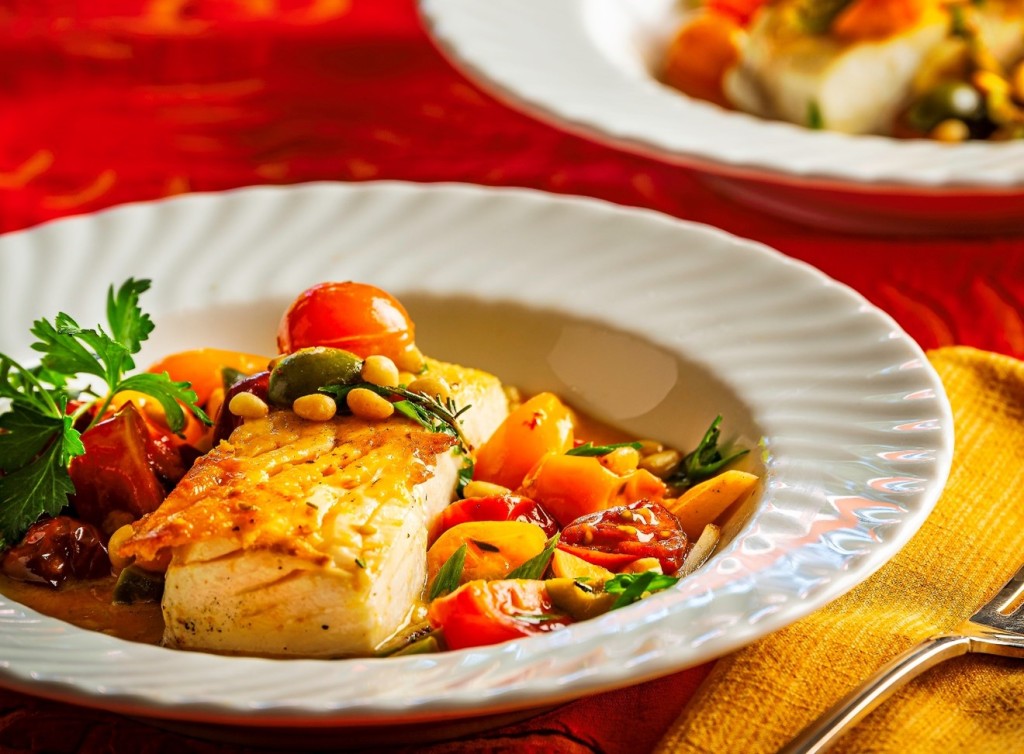Halibut are the largest members of the “right-eyed” flounder family, so called because they lie on the seafloor on their left side of their bodies and have both eyes looking up from the right side. The types commonly encountered in North America are the California halibut (Paralichthys californicus), Atlantic halibut (Hippoglossus hippoglossus), and the giant Pacific halibut (Hippoglossus stenolepis), which can weigh more than 400 pounds (181 kg). Halibut are predatory hunters that camouflage themselves in sandy seafloor habitats and explode up to ambush smaller fish passing by.
This lifestyle makes them a firm, muscular fish, and they are prized for both flavor and texture. From a sustainability perspective, halibut require close attention with regard to capture method. Because they are bottom dwellers, some fisheries use bottom dredging, which can be very damaging to seafloor ecosystems. Hook-and-line fisheries, however, can be very sustainable and earn a “Best Choice” score with Seafood Watch.
Atlantic halibut are also farmed, and depending on aquaculture practices, can be a great choice too. An excellent eating fish, its meat is firm, white, and low in fat, with a mild, sweet flavor. Available both fresh and frozen, it takes to all standard preparation methods, including baking, broiling, grilling, deep-frying, and panfrying. Just be careful not to overcook it, or it can dry out and fall apart. Halibut’s tender texture and clean flavor make it also a great choice for sushi, sashimi, and crudo. Any of the firm whitefish, such as sole, flounder, dogfish shark, or tilapia can be substituted.

Leave a comment